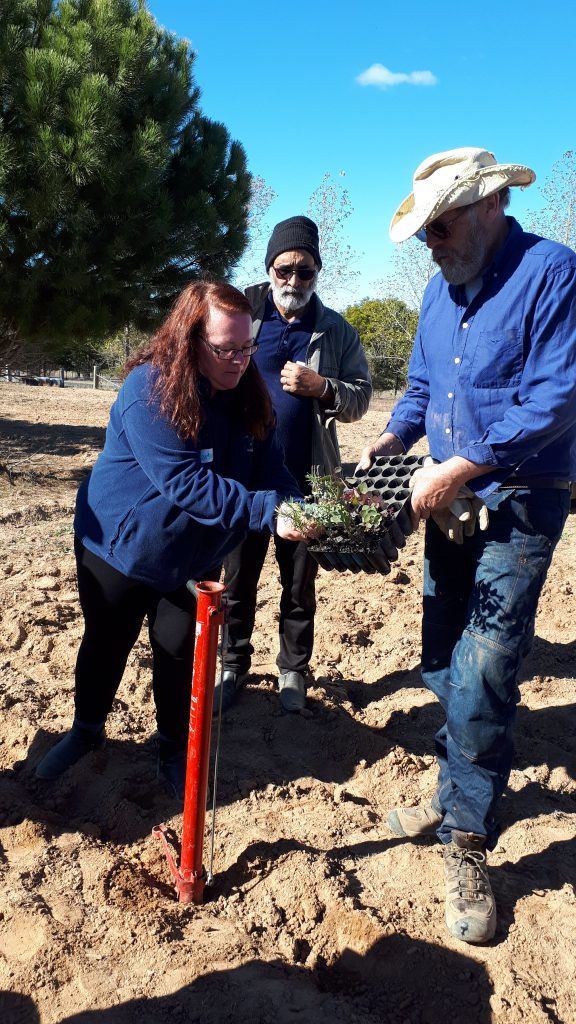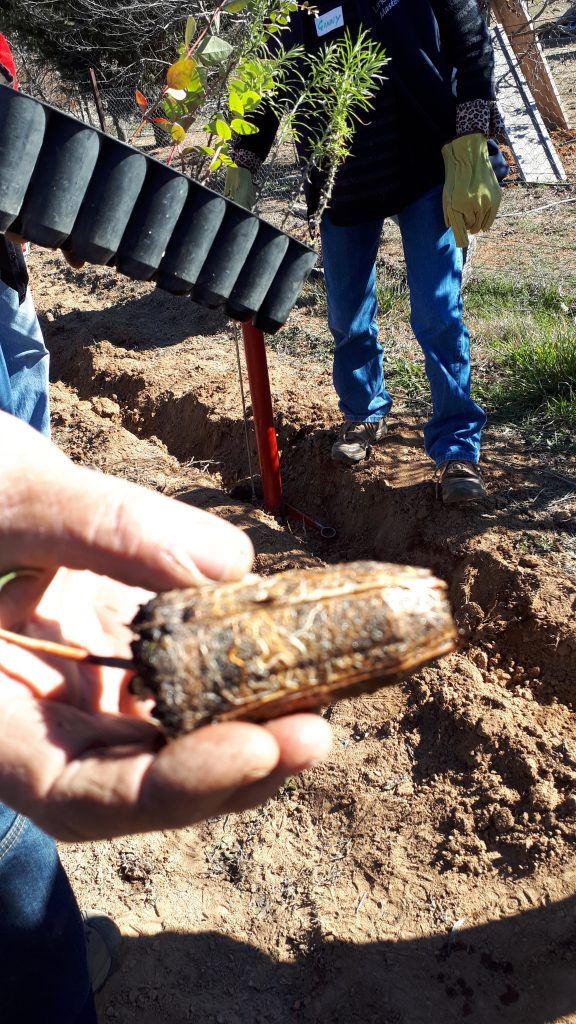Owen Whitaker is a fifth generation farmer with 25 years’ experience revegetating farms and managing large scale revegetation projects. At this workshop he shared his revegetation wisdom and practical knowledge.
“Planting trees is an investment, well designed windbreaks can mitigate production losses from cold winds, improve pasture productivity, provide fodder and enhance biodiversity” Owen Whitaker 2019
Read more in The Economic Benefits of Native Shelter Belts
The 3 P’s of successful revegetation according to Owen are planning, preparation and persistence.
Owen Whitaker’s Planting Guide
Tips for revegetation projects:
- Before deep ripping contact Dial Before You Dig and/or get professional advice to locate services, this can save you thousands of dollars. (Note that some services on rural properties may not be on record with DBYD.)
- Tree and shrub tube stock can be planted in rows using existing fences or in strategic clumps around the paddock to provide stock with access to shade and shelter from all directions. This can be achieved by using circular ‘ring style’ fencing around star pickets without strainer posts with either electric or hinge joint wire, depending on livestock.
- Trees can be incorporated into lane ways so that paddocks can be split up for rotational or holistic grazing.
- A typical shrub and tree planting layout would be 2 metres away from fences, 3 metres between rows and 4 metres between plants. Plant shrubs in the outside rows and trees in the middle rows creating a tapered profile effect to deflect winds. Offset the plants between the rows. The minimum tree row width for a good shelter belt effect is 3 rows x 10 metres however for a better return on outlay 5 rows x 20 metres would deliver the best micro-climate and ecological outcome.
- Controlling biomass and ripping 6-12 months ahead of planting will help water to penetrate into the ground and build moisture profile to aid seedling establishment. Removing pasture by using a knockdown herbicide will reduce the allelopathic effects of pasture and competition for water when the tube stock is planted. Do not use a residual herbicide when preparing the planting site as the active ingredients will inhibit tree establishment.
- Have a tree guard making party and have all guards assembled ready to go before planting day.
- Mulching around the base of plants (but not against the stems) can help the seedlings to establish. A woody mulch is preferred over pasture hay.
- A Pottiputki planting tool can be used with seedlings grown in a HIKO tray. The seedlings are inserted into the top of the planter so you don’t have to bend down to plant seedlings.

Pottiputki Planting Tool (above)
 HIKO tube stock (above)
HIKO tube stock (above)
Owen’s tips for direct seeding:
- A four-wheel drive direct seeder is a good option for lighter soil types on slopes that are not suited to ripping. Plants sown using direct seeding can take three to five years to germinate. Seeds will germinate at the ideal time and when moisture is available, usually during summer rains.
- Native grass seed is often expensive. You can reintroduce native grasses cost effectively by sowing or blowing small amounts of seed into degraded pastures. The seed can also be hand sown. Smaller seeds should be mixed with sawdust or vermiculite so they can be spread more effectively.
- The composition of pasture can be manipulated to include native grasses by allowing the grass time to seed and using rotational grazing. Animals will move the seed around your farm on their coats and in their dung. Wind and rain will increase native grass density over time and seasonal events.
- The benefit of direct seeding is that the store of seed remains in the soil and will germinate over a number of years. This helps mitigate the risk of plant failure due to drought. You may need to thin some of the seedlings that emerge over time.
- Some seeds require treatment before planting. For example, some Acacia seeds require scarification (i.e. soaking in hot water) before planting.
More information:
Greening Australia Revegetation Guides for Victoria
Guide for planting temperate grasslands
Plant Net Online – Comprehensive listing of plants in NSW
Braidwood Local Planting Guide for Upper Shoalhaven Landcare
A Guide to Managing Grassy Box Woodlands
This project received grant funding from the Australian Government through the National Landcare Program